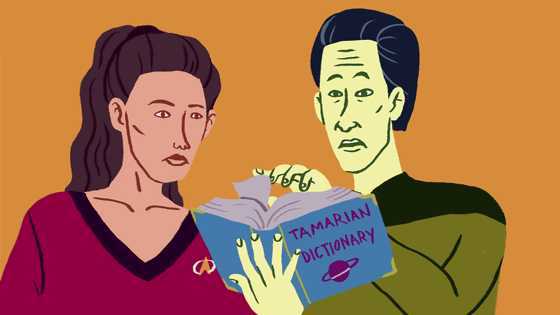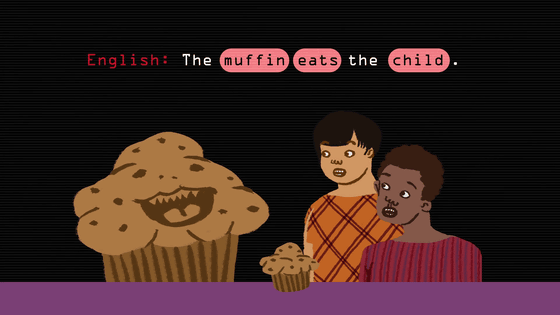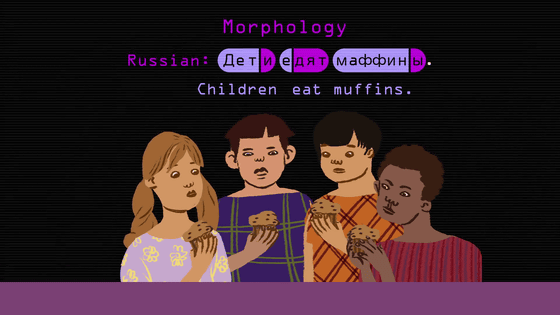What is the mechanism of "Machine translation tool" that can translate multilingual such as Google Translate?

BySarah Joy
In modern times where machine translation including Google Translate has spread, it is easier to communicate with people with different native languages than before. We have uploaded a lot of educational content to movies that describe such a machine translation mechanism in an easy-to-understand manner by animationTED-EdIt is open to the public.
How computers translate human language - Ioannis Papachimonas - YouTube
An alien appearing in a sci-fi movie can speak fluently the language on Earth, such as English, despite extraterrestrial life.

This may be because the crew of the spacecraft can not interrupt the story desperately by turning over a thick "Space dictionary" in order to talk to the alien ......

For reasons why an alien speaks fluent English, it is often "multilingual translator" to appear in SF works. It is a small portable device that can be translated into any language when talking to the earpiece.

One of famous fortune-telling translators of fiction is "Galactic Hitchhiker · Guide"A fish that is capable of universal translation that appears in"Babel fish". It is a small fish that converts brain waves and nerve signals and puts it on telepathy to the other person when put in the ear.

Currently, there are no machines that can translate up to Space Language, but if you focus on a simple translation function that translates the language on Earth, there are many services on the Internet.

With translation service, words and sentences can be easily translated ......

It is also possible to translate the translated text into another language. This translation does not simply refer to the dictionary, but behind the browser is very complicated processing.

Machine translationThere are roughly two types of mechanisms: "rule based translation" and "statistical based translation". In rule-based translation, we use "word database" which contains dictionary of every language in its entirety.

All word forms such as plural forms of nouns and past tense verbs are also registered in the word database.

Then, based on the "grammar" for each language, we translate the input contents into another language.

For example, if you input a sentence "Children eat muffins" into translation software, the program analyzes the sentence structure (syntax) of subjects, predicates, verbs, objects, and so on.

Next, we analyze the morphology and disassemble it into the smallest meaningful parts such as article stems and suffixes of articles and nouns.

Finally, we analyze the role (semantics) played by each word in the sentence and replace it with the word and grammar corresponding to the language to be translated.

In some languages, the sentence structure is special, for example Latin can make meaning as sentences even if the order of words changes.


In the case of English, if you exchange nouns of the subject and the object, it becomes a sentence completely different in meaning "children eat muffins" and "muffins eat children."


There is also a translation problem with the word form, for example Slovenian has a feature which is not seen in other languages, the plural suffix is different for "two children" and "three or more children".


Also, because there is no article in Russian, it is easier to write sentences, but you do not know whether "certain children are eating a certain muffin" or "some children eat some muffin" There is a drawback that it is difficult to clarify meaning clearly.


Besides, in rule-based machine translation, for example, when translating the word "eat", it is necessary to correctly analyze whether it is just "eating" or "eating like emptiness" It has the disadvantage that it is not.

Another method of machine translation "translation based on statistics" translates a database of books and documents translated manually and sentences you want to translate.

Translation based on statistics is determined by the abundance of database ...

The more you repeat the translation, the more accurate the translation will be.

One reason for reasons why translation by machine translation is incomplete, one researcher speculates, "Is it because humans have a unique brain structure to understand language?"

In modern times when machine translation services such as Google Translate became popular, it may seem that 'learning languages' is an old method. However, at this stage it is possible to translate accurately if you learn languages manually than any machine translation. "Brain power" can be trained by studying multilingualresearch resultThere is also.

However, it is almost impossible to learn thousands of languages that exist all over the world manually, and further development of machine translation is desirable. Perhaps, when humankind encounters an alien, a palm-sized machine that can automatically translate any language may be born.

Related Posts:







